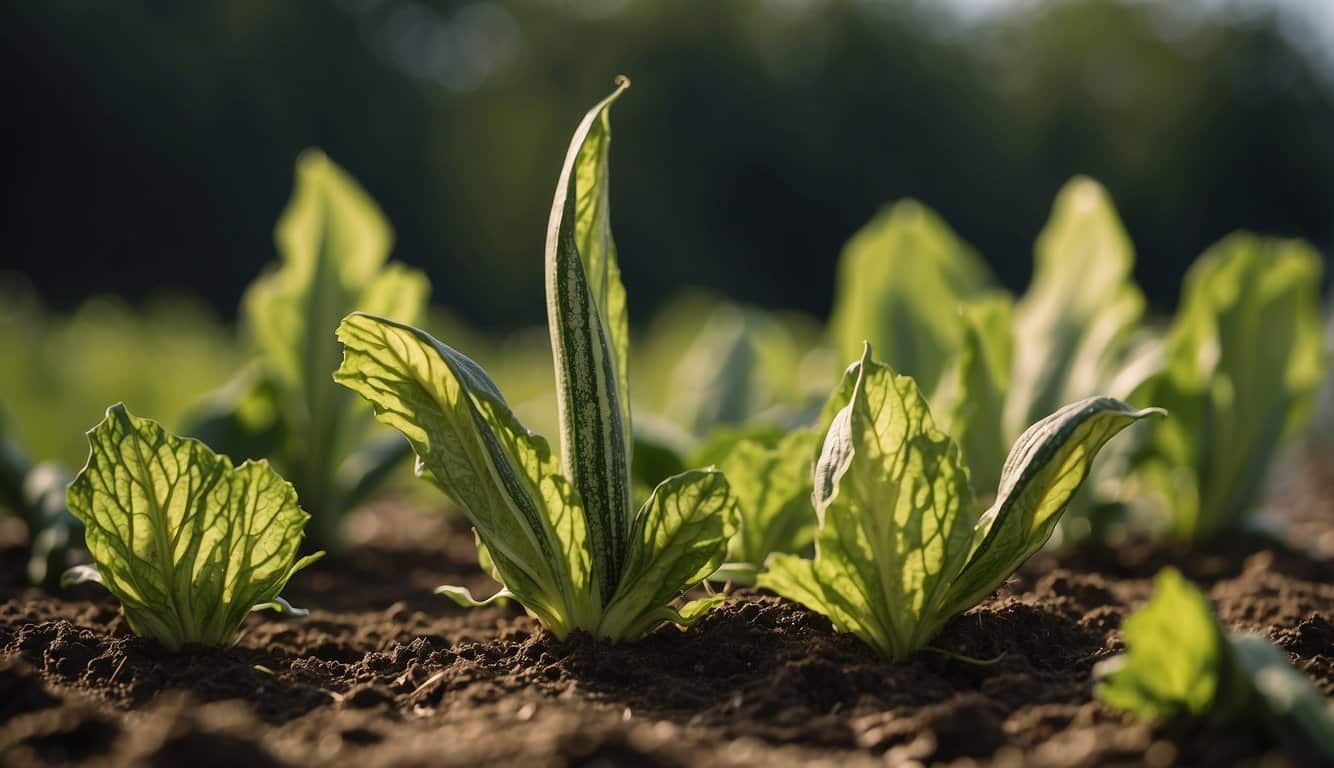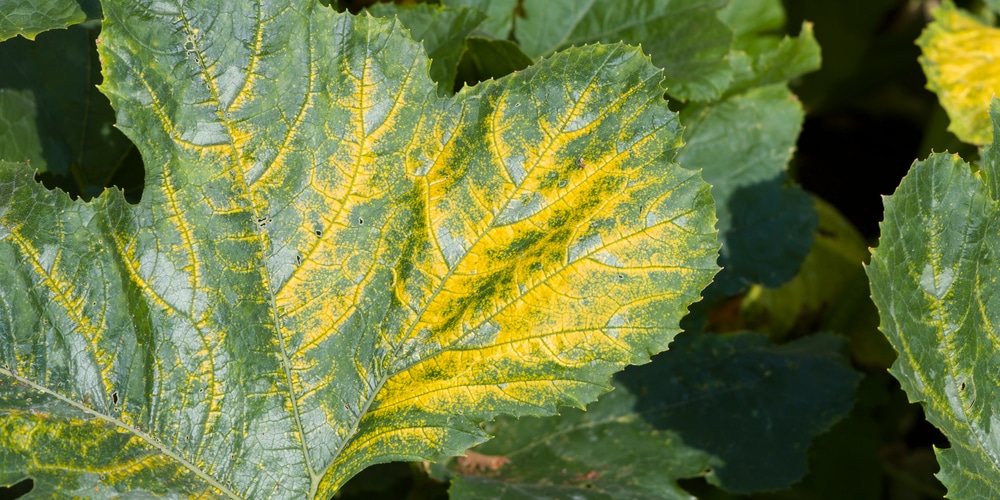In the world of gardening, the health of zucchini plants can be jeopardized by the common yet critical issue of overwatering.
Keen gardeners aim to provide optimal growing conditions, but sometimes enthusiasm leads to excess, especially when it comes to watering.
While well-intentioned, too much water can lead to adverse effects such as nutrient leaching, inhibited growth, and increased susceptibility to diseases.
Recognizing the fine line between adequate hydration and overwatering is essential to foster robust zucchini plants that are capable of producing bountiful and healthy crops.
Understanding the signs of overwatering is a pivotal step toward maintaining the well-being of zucchini plants.
Telltale indicators include yellowing leaves, wilting, and the development of mold or rot on the fruit and vine, which all suggest the necessity for immediate attention to water management.
To ensure the prosperity of these plants, adequate preventative measures, including proper scheduling and soil monitoring, play a key role.
Additionally, effective strategies for treatment and recovery from overwatering are paramount to remediate the potentially detrimental effects and revive affected plants.
Key Takeaways
- Overwatering can impede plant health and yield, but recognizing symptoms early allows for prompt action.
- Preventive measures and regular monitoring are fundamental to maintaining appropriate moisture levels.
- Effective recovery treatments can help restore overwatered zucchini to a state of productive health.
Identifying Overwatered Zucchini
Zucchini plants require careful watering, as too much can lead to various problems that compromise their health and productivity. It is important for gardeners to recognize the signs of overwatering and to know the immediate steps to take in response.
Signs and Symptoms
- Stunted Growth: A zucchini plant that receives excessive water may show slowed or stunted growth. Look for smaller leaves and shorter stems.
- Yellow Leaves: Leaves that begin to yellow and feel soft to the touch may be indicative of too much water.
- Wilting Leaves: Despite the presence of adequate water, leaves may wilt due to root oxygen deprivation.
- Mold or Mildew: The appearance of mold, especially powdery mildew, on leaves and stems can arise in moist conditions.
- Fruit Decay: Zucchini fruits rotting on the vine can be a direct consequence of overwatering.
- Waterlogged Soil: When soil is moist but perennially saturated, it signals excessive irrigation.
Immediate Actions
- Test Soil Moisture: Before watering, check the soil moisture. Use your fingers or a moisture meter to assess if additional water is needed.
- Adjust Watering Schedule: Reduce the frequency of watering and only water when necessary to prevent further stress to the plant.
- Improve Drainage: Ensure that the soil allows for proper drainage to prevent water from pooling around the roots.
- Fungicide or Pesticide: In cases of disease such as powdery mildew, a fungicide may be required. For pests like vine borers, pesticides might be necessary.
Prevention and Care
Ensuring the health of zucchini plants involves a careful balance of moisture, proper soil, and awareness of environmental conditions.
Proper Watering Techniques
Properly watering zucchini plants requires observing the plant’s behavior and the moisture level of the soil. They recommend a ‘soak and dry’ method, which involves watering deeply, then allowing the topsoil to dry out before the next watering. This encourages strong root development and prevents waterlogging.
- Frequency: Adjust watering based on weather conditions; less frequent in cool, cloudy weather and more frequent in hot, dry weather.
- Amount: Provide 1 to 2 inches of water per week as a general rule.
Soil Considerations
Soil plays a vital role in the health of zucchini plants, primarily by affecting drainage and nutrient availability. For optimal growth, the soil should be well-draining and rich in organic matter.
- Drainage: Amend heavy soils with compost or perlite to enhance drainage.
- Nutrients: Use a balanced fertilizer to maintain nutrient levels without over-fertilizing, which can exacerbate moisture issues.
Environmental Factors
The immediate environment can significantly influence the risk of overwatering in zucchini plants. Gardeners should account for local rainfall when planning their watering schedule and consider shading plants during intense heat to reduce evaporation.
- Rainfall: Track local weather and reduce manual watering when rain is sufficient.
- Temperature: Protect plants from extreme temperatures that can skew watering needs.
Treatment and Recovery
Treating an overwatered zucchini plant involves specific revival techniques and consistent post-recovery care to restore the plant’s health.
Reviving Techniques
When a zucchini plant has been overwatered, the first step is to stop watering the plant and allow the soil to dry out.
Gardeners should examine the plant and assess the extent of any visible damage, such as yellowed or wilting leaves.
If the soil is waterlogged, they may need to move the plant to a dry, sunny location to expedite the drying process.
Affected plants will benefit from:
- Improved drainage: Ensuring the pot or ground has adequate drainage is critical to avoid future overwatering.
- Root inspection: Careful examination and trimming of any damaged roots can help prevent rot from spreading.
- Soil replacement: If the soil is severely waterlogged, replacing it with fresh, well-draining soil might be necessary.
Monitoring and Adjusting Care
After addressing the immediate overwatering, it is vital for gardeners to monitor their zucchini plant closely and adjust their watering practices.
They should adhere to the following:
- Watering schedule: Establish a routine based on the plant’s recovery, weather conditions, and soil moisture levels—typically, deep watering less frequently is preferred.
- Soil moisture checks: Before watering, check the soil’s moisture at a few inches deep to ensure it is not already moist.
- Observation: Constantly observe the plant’s response to changes in care to ensure it is on the path to recovery, looking for signs of new growth and improved vitality.
Frequently Asked Questions
These FAQs address common concerns about overwatering zucchini plants, providing gardeners with essential care tips to maintain plant health.
What are the signs of overwatered zucchini plants?
The typical signs include yellowing leaves, stunted growth, mold presence, and the rotting of fruit on the vine.
Overwatering can lead to these issues by washing away soil nutrients and causing root waterlogging.
How can yellowing of zucchini leaves be addressed?
Yellowing leaves often indicate either overwatering or underwatering. A proper balance must be struck; ensure the plant receives deep watering less frequently rather than shallow, more frequent watering.
Yellowing leaves may also point to a nutrient deficiency that can be resolved with appropriate fertilization.
What is the recommended watering frequency for zucchini plants in containers?
Container zucchini plants require more frequent watering than those in the ground, due to quicker soil drying.
A rule of thumb is to water whenever the top inch of soil feels dry, allowing water to run freely from the bottom of the container.
Why do zucchini leaves turn yellow and brown, and how can it be prevented?
Yellowing and browning of zucchini leaves may occur due to overwatering but can also stem from diseases.
Preventative measures include proper spacing for adequate air circulation, watering at the base to avoid leaf moisture, and applying fungicides when necessary.
How can yellowing and rot in zucchini plants be prevented?
To prevent yellowing and rot, provide well-draining soil, avoid overwatering, and ensure balanced nutrient levels.
It’s also crucial to manage pests and diseases promptly, as these can exacerbate the problems.
What causes white spots on yellowing zucchini leaves?
White spots on yellowing leaves are often a sign of powdery mildew, a fungal disease. It thrives in damp conditions.
It can be managed by improving air circulation around the plants and applying fungicides. Make sure to water in the morning so leaves have time to dry before evening.


